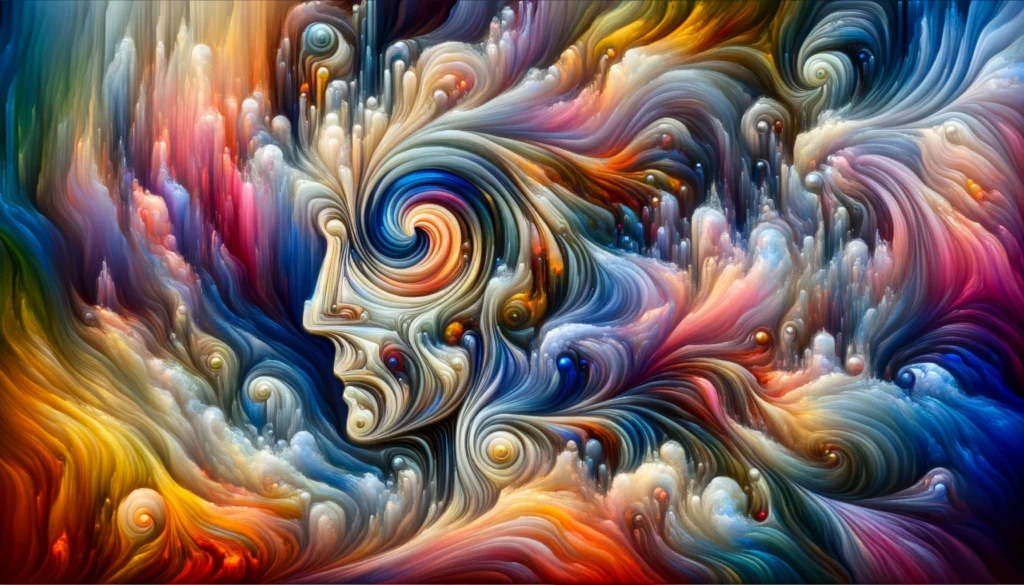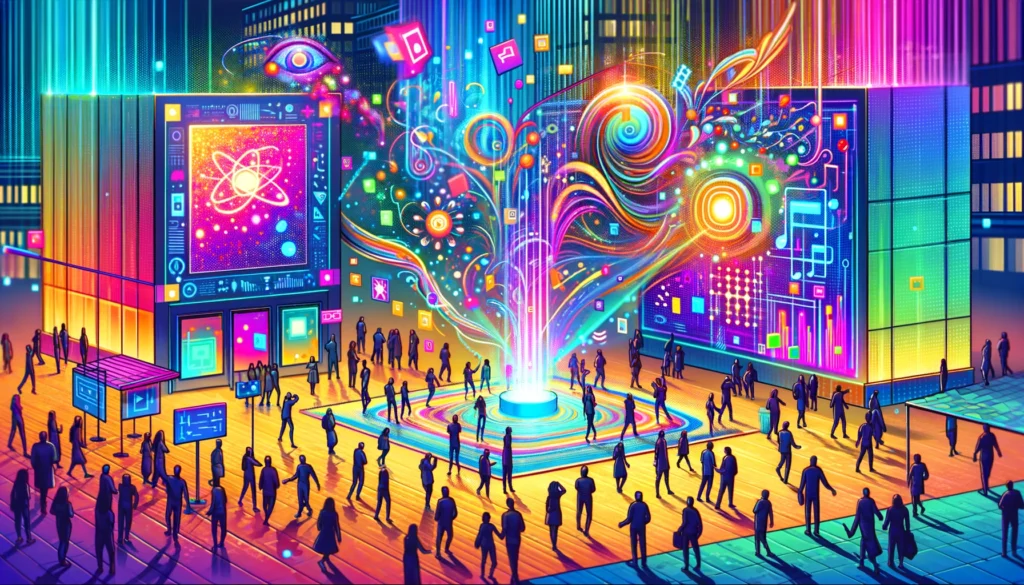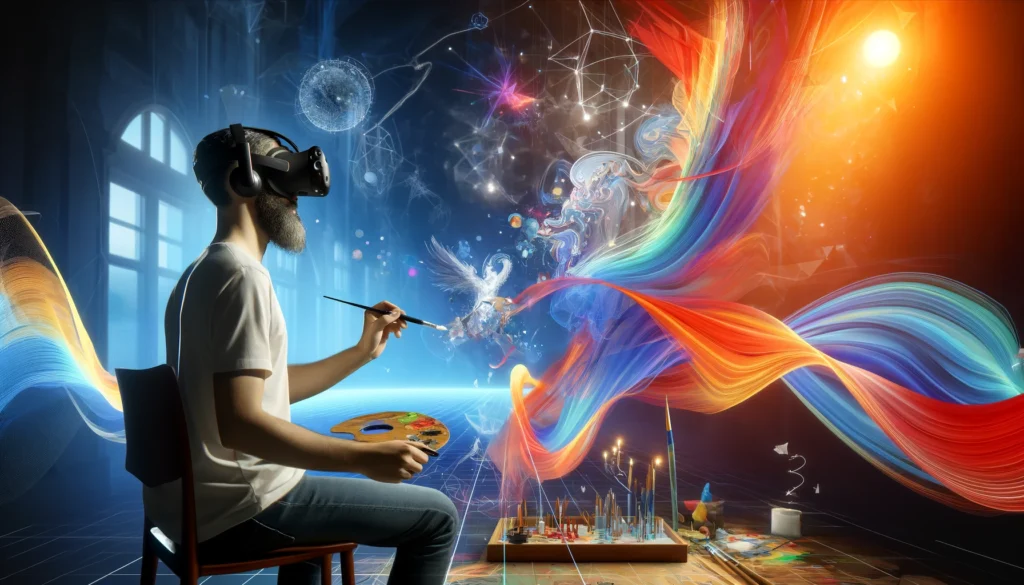Imagine a world where machines create stunning pieces of art, blending human creativity with the limitless potential of artificial intelligence. This isn’t science fiction; it’s the exciting reality of abstract AI art. In this article, we’ll dive into seven groundbreaking trends in abstract AI art that are revolutionizing digital creativity.
Understanding Abstract AI Art
What is Abstract AI Art?
Abstract AI art combines the principles of abstract art—known for its use of shapes, colors, and forms to achieve effect without depicting objects in the real world—with the power of artificial intelligence. This new art form leverages algorithms and machine learning to create unique, often mesmerizing pieces of art.
A Brief History of Abstract AI Art
The journey of AI in art began with simple algorithms capable of generating basic patterns. Over time, technological advancements have allowed for more complex and sophisticated creations. The introduction of deep learning and neural networks has significantly accelerated the evolution of AI-generated art, leading to today’s innovative abstract pieces.
How Does Abstract AI Art Work?
AI art typically involves training a machine-learning model on a dataset of existing artworks. The model learns to recognize patterns and styles, which it then uses to create new, original pieces. Techniques like Generative Adversarial Networks (GANs) and style transfer are commonly used in this process.
Trend 1: Generative Adversarial Networks (GANs)

What are GANs?
Generative Adversarial Networks (GANs) are a type of machine learning model where two neural networks—one generating images and the other evaluating them—work together to create realistic art. This method has become a cornerstone in the field of abstract AI art.
Examples of GANs in Art
One notable example is the work of artist Mario Klingemann, who uses GANs to create fascinating, surreal images that challenge our perception of art and creativity. GANs have also been used to generate portraits, landscapes, and even entirely new artistic styles.
Impact on Art
GANs have democratized the creation of art, allowing anyone with access to the technology to create sophisticated pieces. This has sparked debates about the nature of creativity and human artists’ role in the AI age.
Trend 2: Style Transfer Technology
What is Style Transfer?
Style transfer is a technique that allows an image to be transformed into the style of another. For instance, you can take a photograph and make it look like a Van Gogh painting. This process uses deep learning algorithms to apply the stylistic elements of one image to another.
Examples of Style Transfer in Art
Applications like DeepArt and Prisma have popularized style transfer, allowing users to transform their photos into works of art. Artists and designers use this technology to experiment with different styles and create unique visual experiences.
Creative Applications
Style transfer has been used in various creative fields, from fashion and interior design to marketing and advertising. It’s a powerful tool for artists exploring new styles and pushing traditional art’s boundaries.
Trend 3: AI as a Collaborative Tool
AI in Collaboration with Artists
Rather than replacing artists, AI serves as a collaborative tool, enhancing human creativity. Artists use AI to generate ideas, overcome creative blocks, and explore new artistic directions.
Examples of Collaboration
The partnership between artist Refik Anadol and AI resulted in stunning visualizations that blend data and art. Another example is the AI-generated music album by Taryn Southern, where AI composed the music, and she provided the lyrics and vocals.
Artist Collaborations
Collaborations between AI and artists lead to unique artworks that neither could produce alone. This synergy opens up new possibilities for artistic expression and innovation.
Trend 4: AI in Digital Installations

AI in Public Art Installations
AI is being used to create dynamic, interactive public art installations. These installations respond to the environment or audience, creating a unique and engaging experience.
Examples of Digital Installations
One example is the ‘Tree of Tenéré’ at Burning Man, an interactive installation that responded to movement and sound. Another is the ‘Rain Room’ by Random International, which uses AI to simulate rain that stops when someone walks through it.
Public Art
AI-driven installations are transforming public spaces, making art more accessible and interactive. They invite public participation and create memorable experiences.
Trend 5: AI and Virtual Reality (VR)

AI in VR Art
AI and virtual reality (VR) are a match made in digital heaven. AI can generate immersive environments in VR, allowing users to explore and interact with abstract art in entirely new ways.
Examples of VR Art
VR platforms like Tilt Brush allow artists to create three-dimensional paintings in a virtual space. AI-enhanced VR experiences, such as those created by the collective teamLab, provide immersive art installations that can be explored in virtual reality.
Immersive Experiences
The combination of AI and VR offers unparalleled immersive experiences, making art not just something to observe but something to live and experience.
Trend 6: AI-Generated Sculptures
AI in Sculpting
AI is also making its mark in the world of sculpture. Using AI algorithms, artists can design and create sculptures that push the boundaries of traditional sculpting techniques.
Examples of AI Sculptures
Artists like Sougwen Chung use AI to assist in creating intricate sculptures. These sculptures often incorporate elements of traditional art with innovative designs generated by AI.
Future Potential
The potential for AI in sculpting is vast. It could revolutionize how we think about form and structure in physical art, opening up new possibilities for artists and collectors.
Trend 7: Personalized AI Art
Customized Art with AI
AI allows for the creation of personalized art tailored to individual preferences. This trend is making art more accessible and personalized, appealing to a wider audience.
Examples of Personalized Art
Platforms like AI Portraits Ars allow users to create custom portraits in various artistic styles. AI-generated art can be tailored to match a person’s tastes, creating a unique piece of art that reflects their individual style.
Impact on Individual Creativity
Personalized AI art empowers individuals to engage with art in new ways, fostering a deeper connection between the artist, the art, and the viewer.
Conclusion
The trends explored in this article are just the beginning. As AI technology advances, we can expect even more innovative and exciting developments in the world of abstract AI art. The fusion of human creativity and artificial intelligence promises to transform the landscape of digital art, making it more dynamic, accessible, and engaging for all.
If you found this article helpful, why not explore the rest of our site for more informative content? We cover various market trending topics to satisfy your curiosity and keep you informed. Happy reading!


